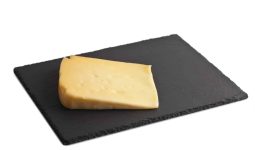Rosemary is one of the most versatile herbs, with its bold flavor and aroma, and it is also one of the easiest to grow. But what if you need to use it in a recipe but are out?
Fortunately, plenty of other herbs and spices are substitutes for Rosemary, all with subtle differences in flavor.
What is Rosemary?
Rosemary is a perennial herb that can grow up to 4 feet tall. Its blue-green leaves taste like a cross between mint and pine.
They lend their scent and flavor to everything from meat to desserts.
Nevertheless, they’re incredibly delicious with roasted meats, potatoes, or braised greens.
However, it’s an essential ingredient in Italian cuisine. It’s versatile enough to work its way into your favorite Indian dishes.
However, if you’ve run out of Rosemary and don’t know what to do with those herbs in your refrigerator, don’t worry!
Therefore, there are plenty of easy substitutes for Rosemary. Which will give you results that are just as aromatic as if you had the fresh stuff on hand.
Substitutes for Rosemary
1. Thyme
These are great substitutes for Rosemary. Thyme works well on meats such as lamb and chicken. Fresh thyme is recommended when cooking, but dried will do in a pinch.
However, because it has a robust flavor, you will likely only want to use about 1/4 teaspoon. While not ideal for desserts or teas, rosemary can still be used when baking if you pair it with other spices such as lemon and Oregano, which are substitutes for Rosemary.
With its health benefits (thyme helps fight infections), there’s little reason not to add some to your next meal if you are out of Rosemary.
2. Sage
Sage is a delicious herb with a distinct, pleasant flavor and aroma. It can add a unique kick to foods when appropriately used, and it is part of the substitutes for Rosemary.
Herbs are used in meat stuffings, game sauces, bread, and biscuits. Sage is also extensively used in soups and stews.
Many cooks like to sauté rosemary before adding other ingredients to their pots or pans. So, if you don’t have Rosemary but need something similar, fresh sage is worth trying.
Moreover, sage pairs well with roasted vegetables such as eggplant or bell peppers. To get you started, here are some suggestions
3. Oregano
As with Rosemary, Oregano can be used to season pork and poultry, but it’s also excellent on red meat.
What sets it apart from Rosemary is that Oregano is much spicier, making it ideal for Mexican dishes. A dash will do when cooking Italian or Mediterranean food.
To substitute, add up to a teaspoon per pound when using rosemary. You’ll need more if you don’t want your food to taste too spicy.
Remember that an overabundance of Oregano can create an unpleasant taste and cause nausea in some people.
However, it contains a chemical similar to salicylic acid. So, to avoid stomach upset, start with small amounts and build up over time.
4. Parsley
If you’re out of Rosemary, use parsley instead, which is one of the substitutes for Rosemary.
Its herbal quality and piney scent are similar to Rosemary, though they’re not exact substitutes for Rosemary.
Use a little less because parsley is milder than Rosemary. However, Parsley leaves have their flavor.
So, if you think a recipe would benefit from both herbs, cook with them or prepare them separately, then mix them at serving time.
Therefore, the flavor difference between fresh and dried parsley is minimal. One tablespoon (0.5 oz) of dried parsley equals about one teaspoon (or two medium sprigs) of fresh leaves.
If added during cooking, parsley might be undetectable in some dishes, like stew. Garnishing it on top helps show it off.
5. Cilantro
The herb family to which Rosemary belongs also includes cilantro and other substitutes for Rosemary, so it’s a natural substitute. Cilantro has a distinct flavor.
So be sure you like it when cooking before using it as a replacement. Additionally, there are two types of cilantro: smooth-leaf and curly-leaf.
They are substitutes for Rosemary. Curly leaves have a sharper flavor than smooth leaves and are harder to find. However, both varieties can be used interchangeably.
To use cilantro as a seasoning, mince or chop well and add in whatever recipe your Rosemary would have been.
6. Basil
Fresh basils are substitutes for Rosemary. In terms of flavor, basil has a grassy taste similar to rosemary and works in bread and marinades.
But remember that while they’re both herbs, they don’t have an identical flavor profile. So, you might want to add them gradually to avoid overdoing it.
So, if your primary concern is making your dish reminiscent of something with Rosemary, use basil.
Therefore, if you want something similar to rosemary’s grassy quality, consider substituting cilantro or parsley.
7. Tarragon
Rosemary has a rich and potent flavor that can’t be duplicated. But it’s often a tricky herb to find in grocery stores. Use tarragon instead; while it doesn’t share Rosemary’s flavor, it is still earthy and fragrant.
More so, it will help your dish retain its flavor profile even if you don’t have access to fresh Rosemary. One of the most common substitutes for Rosemary is tarragon.
In French cooking, 1 tablespoon of fresh rosemary can be substituted with 1 teaspoon of dried or 1 tablespoon of chopped fresh tarragon.
However, there is no exact equivalent in Italian cooking. However, using parsley or other more readily available herbs usually works fine.
Marjoram
Think about it as an herb similar to Rosemary but milder in flavor. For every cup of fresh rosemary, substitute a teaspoon or two of marjoram.
However, it will produce a different flavor in your dish. Marjoram has a similar aroma to Rosemary, which can lend itself well to recipes like roasted vegetables and tomato sauce.
You can also try using it when grilling meat. You may also want to consider growing some yourself. The herb is easy to grow indoors, outdoors, or in a container on your balcony.
Nevertheless, if you decide to grow it, just be sure not to overwater it. Excess moisture can damage its leaves, which are soft.
Also, do not confuse marjoram with Oregano (far more pungent) or mint (more aromatic).
Italian Seasoning
This herb is a classic for a reason. Often called herbes de Provence, it’s commonly used in Italian cuisine and has an intense savory flavor.
When most people think about Italian seasoning, they likely think of Oregano, Basil, and Rosemary. However, a blend like Herbes de Provence will also work great.
This is because of its potent combination of thyme and savory with hints of marjoram and fennel.
They are all flavors that pair very well with chicken (the main ingredient in roast chicken).
These spices, substitutes for rosemary, can also be found in one packet at your local grocery store.
Savory
If you love cooking with Rosemary, you’ll miss it when you have none. If you’re out of fresh Rosemary, don’t fret; you can still cook delicious meals with other herbs and spices.
However, try these substitutes for Rosemary: Marjoram to replace that savory flavor in your dishes. Another herb native to the Mediterranean region, marjoram, has a piney smell similar to Rosemary.
Many cooks say it tastes even better than faithful Rosemary and other substitutes for Rosemary.
In addition to Oregano, this famous Italian herb has a strong taste with an aroma reminiscent of thyme and mint.








